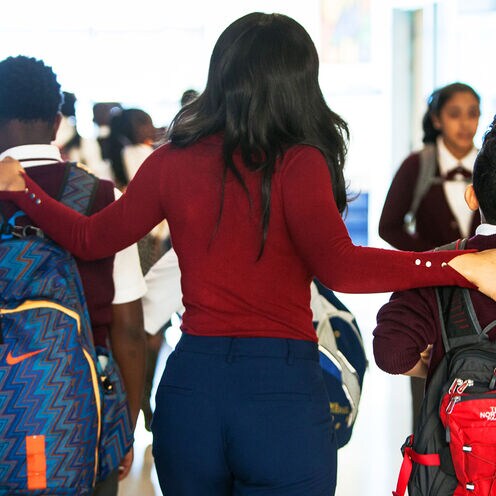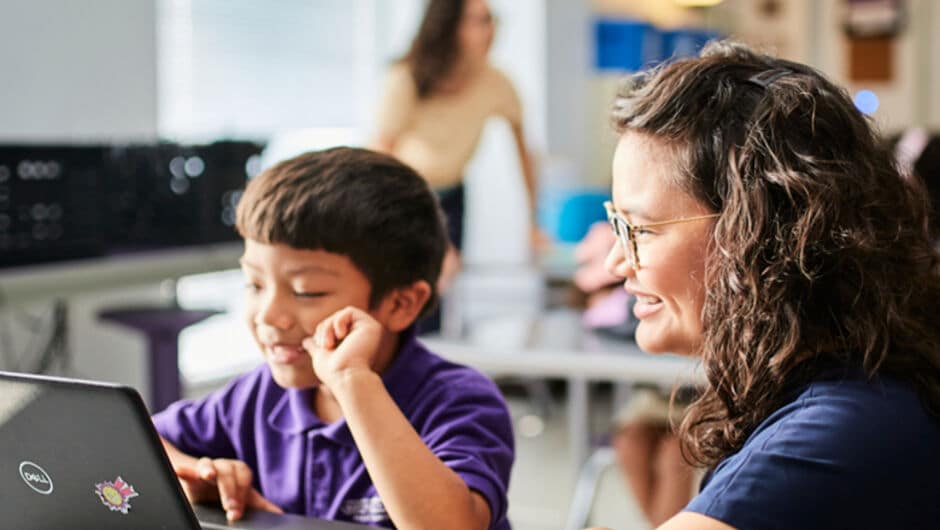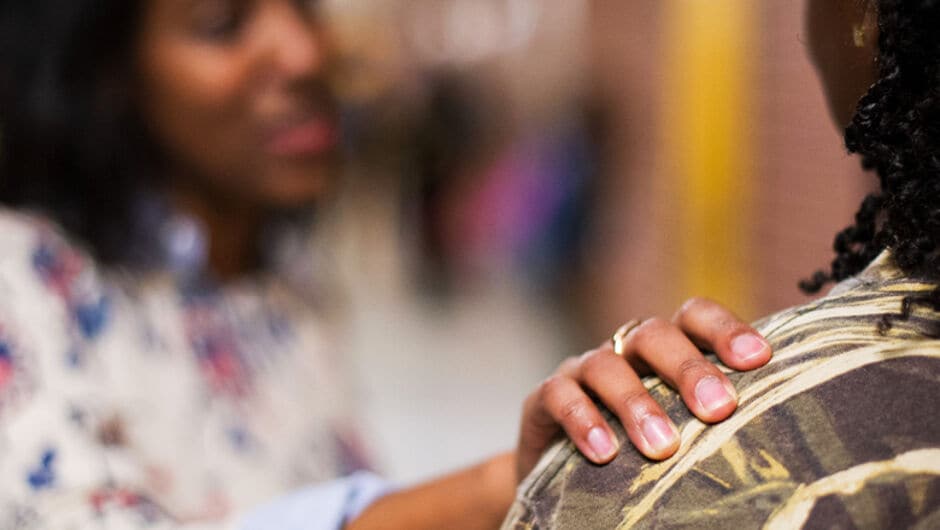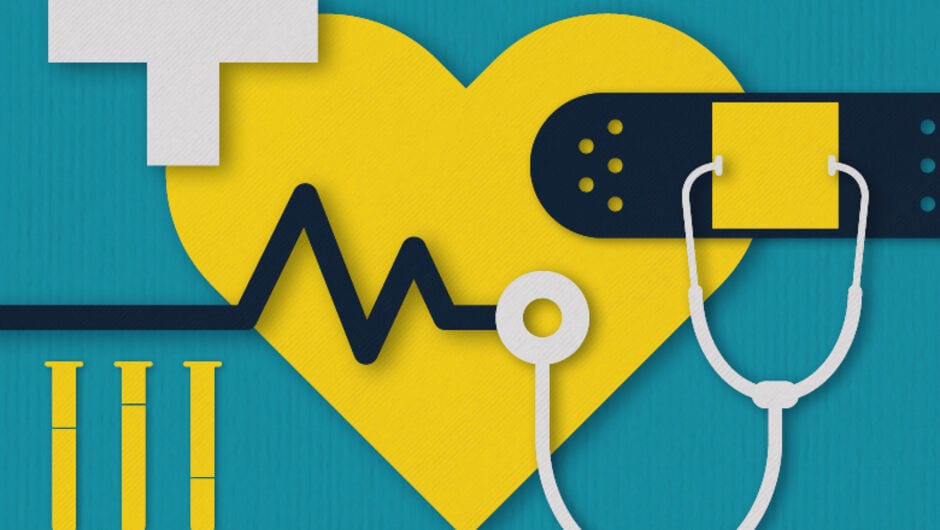
How Schools Can Address Black Students’ Unmet Mental Health Needs
Suicide rates for Black youth have been rising. Providing school-based mental health services, educator awareness, and more authentic engagement could help save Black lives.
Even before the pandemic, providing mental health services was a challenge for schools. That left students with unaddressed needs.
As the world continues to grapple with the effects of COVID19, a racial reckoning for social justice, and a volatile political climate, the urgency to address the needs of students’ mental health is clear.
“The pandemic has brought with it its share of trauma and distressing moments in the lives of many kids,” said Michael A. Lindsey, executive director of the McSilver Institute for Poverty Policy and Research at New York University.
That is particularly true for Black youth.
“When you think about the pandemic, you have to also consider the racial reckoning that we're undergoing in our society related to the murder of George Floyd,” Lindsey said. “When you see someone that looks like you—or that could be your father, your brother, cousin, or whatever the case may be—die like that, it further increases one's sense of hopelessness. And certainly, George Floyd is not the only one. There also is Breonna Taylor and others. Combine that with the pandemic and all of its consequences, I think that we will see increasing rates of suicide.”
A 2019 study published by the American Academy of Pediatrics found that self-reported suicide attempts among Black youth increased by 73% from 1991 to 2017. Since 2017, suicide attempts among Black youth have continued to trend upward, said Lindsey, who is the lead author of the study. Lindsey suspects that will continue following the events of 2020 and 2021.
Lindsey has dedicated his profession to researching and addressing factors that contribute to mental health needs for youth. He serves as the chair of the working group for the Emergency Task Force on Black Youth Suicide that was convened by the Congressional Black Caucus. That task force produced “Ring the Alarm: The Crisis of Black Youth Suicide in America,” which was timed with the release in the U.S. House of the Pursuing Equity in Mental Health Act. The bipartisan bill co-sponsored by Rep. Bonnie Watson Coleman, D-N.Y., and Rep. John Katko, R-N.Y., would allocate $805 million to equitable mental health services and research, including money for schools to hire mental health practitioners. The bill passed the U.S. House in 2020, and U.S. Senators Bob Menendez, D-N.J., Cory Booker, D-N.J., and Catherine Cortez Masto, D-Nev., introduced a Senate version.

One Day spoke with Lindsey about how teachers and educators can support Black students’ mental health in the wake of the pandemic.
What are some signs teachers should look out for and how can they help their students during this time, especially as we transition back to learning and probably in-person learning?
There are two different ways that kids are going to express their symptoms. Some kids are going to display their symptoms in outward ways: They're going to be irritable, they may be fighting, they may have these sort of angry outbursts. That's an outward expression of something that might be happening. What we know is that sometimes kids are actually feeling things inward: depression, they may be traumatized, and it manifests in an outward way. It's important that if a kid is manifesting observed behaviors to try to unpack that and try to understand what's happening at the core.
At the other end of the continuum, you have kids that are going to be very quiet or they're not going to have the observed manifestation of challenging matters pertaining to emotional and psychological well-being. If you notice a change in terms of grades or academic performance, or if you notice that this kid has been particularly jovial in the past or outward in their expressions, and now all of a sudden they're more withdrawn or quiet, you might want to engage that kid a bit more about what's going on in their life. Ask them how they are feeling, and really get kids to express what they're feeling—not so much how they're doing, but what they’re feeling—so that you can understand the range of emotions that might be underlying what you are seeing.
What roles should schools play in addressing the stigma of seeking mental health, particularly among Black boys?
I would say Black youth in general because the stigma really has no sort of gender boundary. It's important to express how important it is to have emotional and psychological health—to check in with kids and promote how important it is to seek mental health services. Obviously, those services have to be available in schools, and oftentimes what we find in communities of color is that there's a relative dearth of behavioral health providers in schools. Hopefully there is a provider in the school, which is a big statement unto itself: that mental health really matters.
Then we encourage kids to seek that support. Families can play a huge role, too. I did a study that came out a few years ago in the Journal of Adolescent Health, and we found that Black kids who were connected to school-based mental health services reported that their family members supported them, their emotional and psychological health, and their connections to those services in schools, whereas those kids who did not report that level of support from their families did not use those services.
It's important to then have that outreach to families, whether you're promoting the importance of mental health through a correspondence that you send home to families or promoting it at the PTA meetings. The school leadership really has to be out front on conveying to families and the school community how important mental health supports are for kids who are in need of them. I think those are some of the things that we can do to bridge that divide.
Is there some synergy there that could happen with the school and the community?
Families are 20 times more likely to use school-based mental health services than they are to use services in the community. When we have those services available in schools that are proximal to the challenges that kids are experiencing, kids and their families are likely to access those school-based services over going to community based services.
What we know now is that increasingly, a lot of community based providers that are not situated in schools are developing more school-based programs as part of their overall operation. It also speaks to how important it is to bring them into the fold in terms of how we can connect with families and make services available for families.
“The school leadership really has to be out front on conveying to families and the school community how important mental health supports are for kids who are in need of them.”
School leaders are starting to think of ways they can engage parents more. Could opening the school services beyond school hours be a good way to connect with the community and families?
One of the things I really argue for is to open the school building beyond the actual school day and to have opportunities for families to come after work to be involved in those services in support of their child's mental health. It's the only way that we're going to ensure that kids who need services most actually will be connected to them.
That family and community engagement piece is really critical. What schools can do is open their doors and really have a welcoming environment for families to be involved more in the school and related activities, for community based organizations to come into the schools and have a role, whether it's offering mentoring programs or afterschool supports for kids who may be struggling academically.
We still overwhelmingly see that the demographics for teachers are white and female. How can white female teachers specifically, or white teachers in general, get past their unconscious bias and really look at what's happening with these students?
Any teacher—white, Black, whatever—must have an authentic engagement with their students. An authentic engagement is really around respect for the history and the experiences of that particular child in their own life, but also broadening it out too. If they're Black or Latinx, what is the history of that culture's experience in our society? Having an appreciation for that is critical and important.
It also means that teachers suspend their judgments or preconceived notions and start where kids are in terms of how they identify themselves. They may identify themselves in broad ways or multiple ways. It's important to appreciate that in terms of how kids want to be referred to or how they want to be seen.
Oftentimes we want kids to share their stories or share their experiences with us so that we can grow. As practitioners, providers, educators, we have to do our own due diligence, to do that self-work to tear down stereotypical thinking and the parameters of how we see kids’ experiences and their histories. You have to do that self-work in order to really have that authentic engagement.
Several states have limited what educators can teach in U.S. history, especially racism. How might that affect the mental health needs?
It's helpful to everyone to understand the history and the experiences of oppression, and subjugation that marginalized populations have experienced in our society. It's important that we have an inclusive curriculum that appreciates and honors the diverse history of our society, of students and cultures that are reflected in our actual classroom or in that school building. One should be able to open history books and see themselves in that history—and we have to face the realities of that history. Some of it is not so pretty, but we owe it to ourselves to understand that history, to include that history. Because what we know then, if we don't understand our history, if we don't understand our triumphs and the things that we've overcome, if we don't understand and appreciate our successes, then we miss out on the opportunity to really include and expand the sense of who we are and who is reflective and represented in our history.
“As practitioners, providers, educators, we have to do our own due diligence, to do that self-work to tear down stereotypical thinking and the parameters of how we see kids’ experiences and their histories.”
You’ve been an advocate for the Pursuing Equity and Mental Health Act. Can you talk a little bit about that and how it could shape the mental health access we see in schools?
What that bill calls for is $805 million in appropriations that, in part, will increase the number of behavioral health providers in schools. What we know now, as I mentioned earlier, is that oftentimes in communities of color, and low-income, low-resource communities, there is not a behavioral health provider in schools. If there is a provider, that provider is working at two and three schools, they may be there only a few days a week. Often one provider is trying to work with 1,000 kids.
What we want then is to have these appropriations build up the workforce of behavioral health providers to not only be available at every school but to also be proportionate to the number of kids in schools. But we also have to offer training and create a pipeline for that workforce to be developed.
That's incredible. What would be the ideal ratio then?
We're going to have to really call on our economist colleagues to help us to think that through. Somewhat anecdotally, I'd say that—and I'm going back and drawing from my days as a mental health clinician—I could successfully handle a caseload of about 25 or 30 people where I am deeply entrenched in their worlds, and understanding their experiences, and bringing to bear the best of mental health interventions and evidence-based practices to that context of treatment so that I could be the best provider possible. Upwards of one mental health provider to 25 to 30 students might be an appropriate ratio.
What kind of support do you wish you had growing up or what support did you have that you wish other students had access to as well?
When I was growing up, we didn't have behavioral health providers in schools. I am really excited for kids to have opportunities to reconcile their challenges with a provider in school. I also was the beneficiary of really great mentors. My mom reached out to mentors and connected me with those folks. Mentoring is really, really important, and we need to have more mentoring programs that expose kids to things outside of their purview or outside of their community and help families to understand and appreciate many different things that mentoring experiences can offer.
This interview was edited and condensed for clarity.
We want to hear your opinions! To submit an idea for an Opinion piece or offer feedback on this story, visit our Suggestion Box.
Sign up to receive articles like this in your inbox!
Thanks for signing up!
Content is loading...








